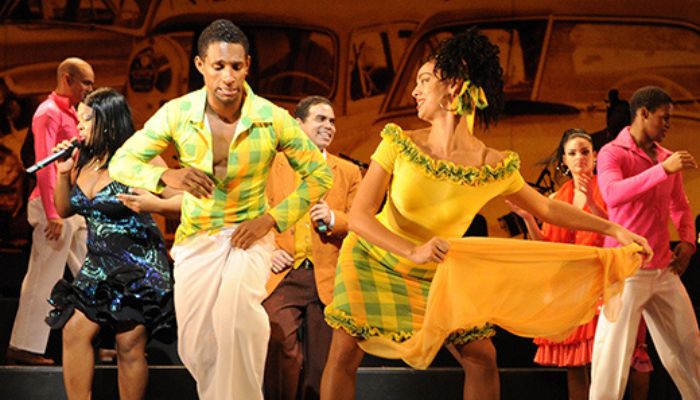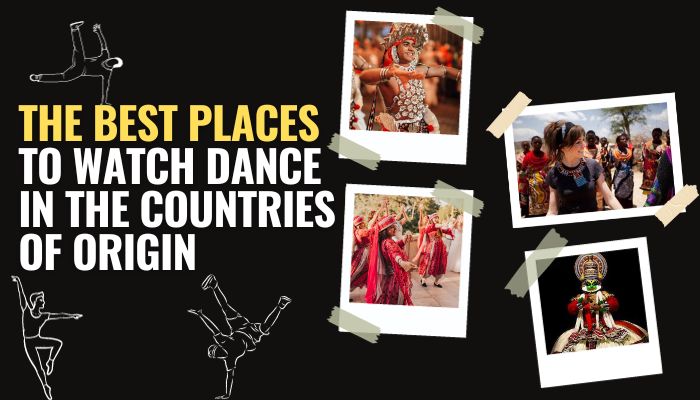Religious rituals, entertainment, cultural traditions, and individual expression have all included dancing at some point in human history. According to studies in psychology and sociology, the “synchronous movement” of dancing with others can boost your mood, memory, and sense of community. Similarly, watching dance can evoke positive emotions and a sense of belonging to a larger cultural tradition—the location where dance enthusiasts can sample representative forms from around the world.
● Havana: Rumba

The ancestors of rumba date back to the middle of the 19th century, when enslaved African drummers combined with the music of Spanish colonisers to create a new genre. The Afro-Cuban dance was primarily performed on street corners as a lively method of rebellion; it was rhythmic, fiery, and often marked by exaggerated hip movements. Its sexuality and “dangerous” suggestiveness led to its prohibition or restriction at various points; after all, “rumba” is Spanish for “party.” The dance evolved to include new elements and techniques, such as the US-popular ballroom style.
These days, the rumba is the only dance done year-round and on national holidays. It is widely taught nationwide because of its cultural complexity, which sets Cuba apart.
Viewing locations: The streets of Callejon de Hamel in Havana come alive with music and dance every Sunday from noon until four. Narrow but vibrant with murals, sculptures made from found objects, and food and drink stand, this is the best place to witness the birthplace of the rumba.
● Honolulu: Hula

Each of Hawaii’s islands claims to be where hula first began, adding further confusion to its origins. The hula has deep spiritual significance for Native Hawaiians, who believe their goddesses first danced it.
Between 1830 and 1832, it was illegal to perform the hula because, as Christianity spread to Hawaii, newly converted natives viewed the dance as immoral. However, many islanders disregarded the law after Queen Ka’ahumanu died in 1832 and continued using the fashion until its formal reinstatement in 1874. There are two styles of contemporary hula. Both hula kahiko and hula’auana draw from ancient hula, but hula’auana also incorporates elements of Western dance.
Viewing locations: Waikiki’s Khi Beach Hula Performance is one of the few free, authentically Hawaiian shows on the island of Oahu. The dancers perform to live music and may even give lessons to the audience. Narration, translation, mythology breakdowns, and more can all be a part of a show’s package. Every Wednesday and Saturday at 6:30 and 7:30 p.m., the show begins. This ceremony happens every night at 6 p.m. in November and December.
● Seville: Flamenco

Flamenco, now a cultural icon, emerged in Southern Spain from a fusion of traditions from Europe, Latin America, and the Caribbean. Poetry, song, guitar, dance, hand clapping, and finger snapping are all integral parts of Flamenco. Rapid urbanisation and increased foreign visitors helped spread the dance throughout Spain’s major cities in the middle of the nineteenth century.
Spain’s upper classes at first disregarded Flamenco because of its association with the marginalised Roma community. Nonetheless, the style eventually became a fiery representation of Spanish culture, drawing many foreigners to Spain.
Viewing locations: The flamenco styles of tonás and sevillanas both originated in Seville. It’s also home to the Flamenco Dance Museum, which comprehensively introduces the style through exhibits on the dance’s history and performances.
● Paris: Ballet

Despite its common association with Russia, ballet emerged as a popular form of court entertainment in Italy during the Renaissance and flourished in France. During his reign, King Louis XIV patronised several ballet academies, which explains why the language of ballet is so intrinsically French. A favourite of yours, right? “Cat Step,” also known as the pas de chat.
Ballet’s widespread acclaim in France undoubtedly contributed to its elevated status as an art form. Louis XIV established what is now known as the Paris Opera Ballet, which continues to perform and educate some of the world’s most accomplished ballet dancers today. They go on to dance with prestigious companies across the globe.
Viewing locations: In the 12th arrondissement, visit the modern Opéra Bastille. The Paris Opera Ballet will introduce you to ballet this December with “Swan Lake” and in the spring with other showcases and tributes to influential figures. Tickets sell out fast, so plan.
Conclusion – Dance in Countries
Traveling lets you experience these things, including learning about the local history, culture, customs, and cuisine. Experience luxury travel and learn about its many facets once in a lifetime. The above places are great for seeing international traditional dances.



